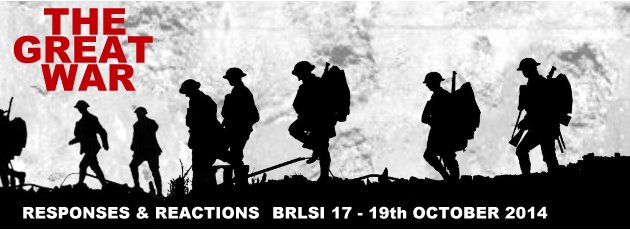Saturday 18th October: BRLSI’s Great War Symposium continued with Dr Emily Mayhew of Imperial College, London (pictured right), on Medical Improvements for Wounded Soldiers during the Great War.
For Britain, at least, front-line medical care was one of the success stories of World War One. No previous war had prepared the Army for what it faced now, as injury displaced infection as the main cause of hospitalisation, and new weaponry inflicted far more severe damage. The British responded by creating field hospitals close to the front lines and training their stretcher-bearers to give treatment on the battlefield, the system that has become the basis of all modern battlefield medicine.
The stretcher-bearers, forerunners of today’s combat medical technicians, emerged as (largely unsung) heroes, going over the top just 30 seconds after the infantry to begin bringing the wounded back. Dr Mayhew spoke movingly of the moment when a soldier becomes a casualty, helpless without medical care, and how the methodology for helping troops survive that experience was developed on the battlefields of the Great War. Today, she told us, that methodology is being used in civilian medicine, as ambulance crews begin treating patients while carrying them to hospital.
Saturday afternoon was completed by Prof Alison Fell of the University of Leeds (right), who gave us an entertaining and instructive guide to The Role of Women in France and Britain during the War. Among the women who found themselves caught up in events was Edith Cavell, the British nurse executed by the Germans for helping Allied soldiers escape from Belgium, and Prof Fell contrasted the glamorised image of her used by propagandists on both sides with the rather more dignified reality.
Vera Brittain represented the nurses, who fell into two distinct groups; the professionally-trained Queen Alexandra’s Royal Army Nursing Corps (QAs) and the more numerous Voluntary Aid Detachment (VAs). In an inversion of Britain’s still-rigid class structure, the VAs were employed on relatively menial tasks despite being mostly from the upper classes, while the QAs took a lofty view of them, despite being from relatively humble backgrounds. Morals were strictly enforced for all groups; one nurse was sacked for allegedly kissing the patients.
Prof Fell’s final group were the women who stayed at home but took over jobs previously done by the men who had gone to the trenches. The government’s Dilution Principle said that two women were needed to replace each man, and for many women war work, even in the health-destroying munitions factories, presented an opportunity to escape domestic service and earn decent wages for the first time (wages for women were reduced again after the war ended). Women’s contribution to the war effort led directly to women (aged 30 or more) getting the vote in 1918, although in France it took until 1944.
The Great War: Responses and Reactions, part of BRLSI’s commemoration of the 100th anniversary of the start of World War One, examines the war’s cultural, artistic and social legacy. Sunday sees the final four lectures, including BBC documentary maker Richard Van Emden on Families and Children of the Great War (11.15am). A full programme is available online here. Each lecture costs £5 (£3 for BRLSI members and students).

